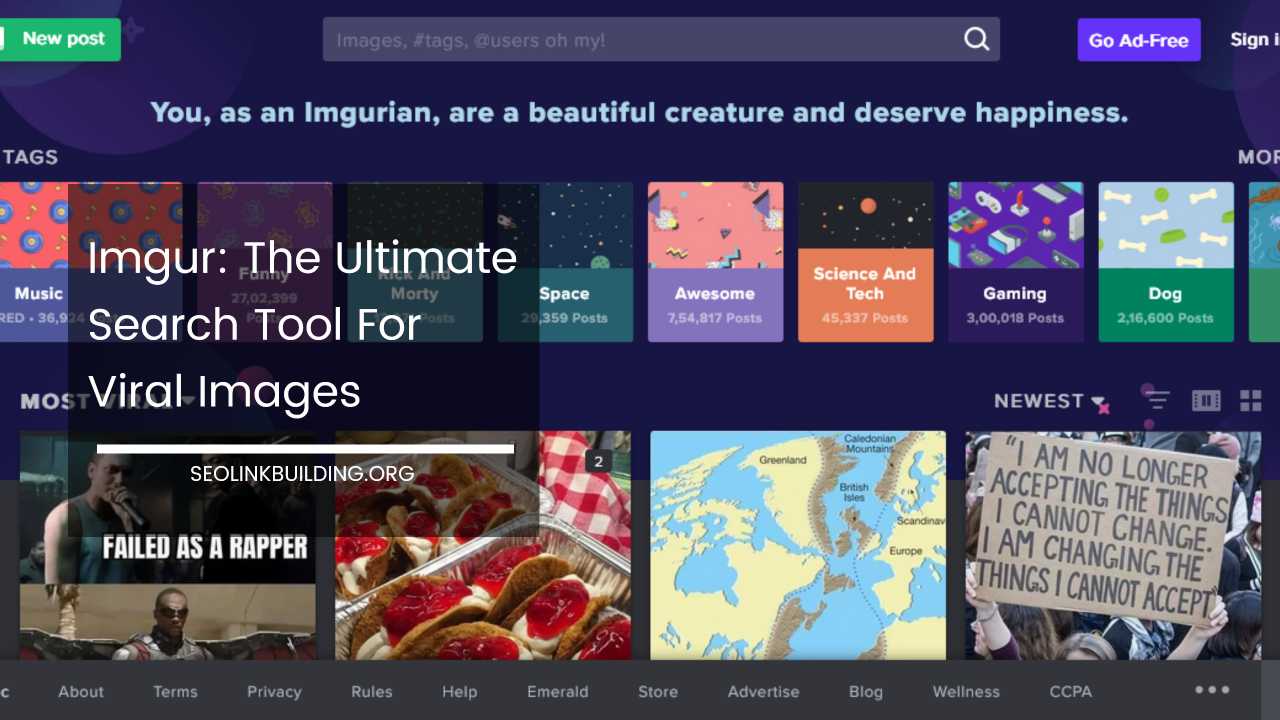Blogging for Business: The Complete Guide

Blogging for Business
Blogging for Business: A Powerful Tool to Attract, Engage, and Convert
In today’s digitally driven world, a robust online presence is no longer a luxury for businesses – it’s a fundamental requirement for success. Within this digital landscape, blogging has emerged as a powerful tool to attract new customers, engage with existing ones, and ultimately convert interest into sales.
But what exactly is blogging for business, and how can you leverage it for maximum impact?
This comprehensive guide dives deep into the world of business blogging, exploring its undeniable benefits, outlining key strategies, and providing practical tips to get you started. We’ll delve beyond the basics, equipping you with advanced techniques to take your blog from good to great.
Why Blog for Your Business? A Deep Dive into the Benefits
Blogging offers a multitude of advantages for businesses of all sizes and across industries. Here’s a closer look at some of the most compelling reasons to incorporate blogging into your marketing strategy:
-
Increased Website Traffic: Compelling blog content acts as a magnet, attracting potential customers searching for information related to your industry or the problems you solve. By establishing yourself as a thought leader through informative and valuable blog posts, you increase the chances of your website appearing in search engine results pages (SERPs), leading to organic traffic growth. But effective blogging goes beyond basic search engine optimization (SEO). Strategic content creation allows you to target long-tail keywords with lower competition, potentially reaching a more qualified audience actively seeking solutions you offer.
-
Improved Lead Generation: Blogs provide a platform to nurture leads by offering valuable content that addresses your target audience’s pain points. You can capture leads through calls to action (CTAs) strategically placed within your blog posts. These CTAs can encourage readers to subscribe to your email list, download valuable resources (like ebooks or white papers), or request a consultation. By offering gated content, you not only provide value but also gather valuable customer information for further lead nurturing.
-
Enhanced Brand Awareness and Thought Leadership: Regular blogging allows you to showcase your brand personality, values, and expertise. By consistently providing insightful content that demonstrates your deep understanding of industry trends and challenges, you establish yourself as a trusted authority in your field. This fosters brand recognition, builds stronger customer relationships, and positions you as a go-to resource within your niche.
-
Boosted Customer Engagement: A blog fosters a two-way communication channel, allowing you to connect with your audience on a deeper level. You can spark conversations by responding to comments and questions on your blog posts, creating a sense of community and loyalty among your audience. This fosters trust and strengthens customer relationships. Additionally, consider hosting Q&A sessions or live chats to directly address audience concerns and build a more interactive experience.
-
Stronger SEO Performance: Blogs provide fertile ground for incorporating relevant keywords that search engines use to rank websites. By strategically using keywords throughout your blog content, but prioritizing natural language over keyword stuffing, you improve your website’s search engine visibility and organic ranking. However, SEO goes beyond keywords. Building backlinks (links from other websites to yours) is crucial for establishing your blog’s authority in the eyes of search engines. Guest blogging on relevant industry websites is a great way to acquire high-quality backlinks.
-
Lead Nurturing Throughout the Sales Funnel: Blogs are ideal for nurturing leads throughout the sales funnel. You can create targeted content that addresses specific customer challenges at different stages of the buying journey. For instance, blog posts aimed at the top of the funnel (awareness stage) might focus on broad industry trends and educational content. As leads move further down the funnel (consideration and decision stages), you can provide more in-depth content showcasing product comparisons, case studies, and free trials, gently guiding them towards making a purchase decision.
-
Cost-Effective Marketing: Compared to traditional marketing methods, blogging is a relatively cost-effective way to reach your target audience. The content you create has the potential to generate long-term value, providing ongoing benefits without a constant financial outlay. However, creating high-quality content requires investment in terms of time and resources. Consider repurposing existing content into different formats (infographics, videos) to maximize its reach and value.
Crafting a Winning Business Blog Strategy: A Step-by-Step Guide
Now that you understand the power of blogging for business, let’s explore some key strategies to create a successful blog:
-
Define Your Target Audience: The foundation of any successful blog is a clear understanding of your ideal customer. Who are you trying to reach? What are their pain points, questions, and interests? Conduct thorough market research to develop detailed buyer personas. Tailoring your content to their specific needs and challenges is crucial for attracting and engaging readers.
-
Choose Your Niche: Don’t try to be everything to everyone. Focus on a specific niche within your industry and establish yourself as an expert in that area. This allows you to deliver targeted content that resonates with your ideal customer profile. For example, if your business offers marketing solutions, instead of creating generic marketing blogs, you could niche down to content marketing for e-commerce businesses.
-
Develop a Content Calendar: Plan your editorial calendar in advance to ensure consistent content creation. This helps maintain audience engagement and demonstrates your commitment to providing valuable information. When creating your content calendar, consider incorporating a mix of content formats like blog posts, listicles, infographics, case studies, and even video blogs (vlogs). Scheduling content well in advance allows you to leverage social media promotion and build anticipation for upcoming posts.
-
Focus on High-Quality Content: Content is king, and in the world of blogging, high-quality reigns supreme. Strive to create informative, engaging, and well-written blog posts that provide genuine value to your readers. Here are some additional tips for crafting high-quality content:
- Conduct thorough research to ensure your content is accurate, up-to-date, and insightful.
- Craft compelling headlines that grab attention and accurately reflect the content’s value proposition.
- Write in a clear, concise, and easy-to-understand manner, avoiding overly technical jargon.
- Break up text with visuals like images, infographics, and videos to enhance readability and engagement.
- Optimize your content for mobile devices, as a significant portion of readers access blogs on smartphones and tablets.
-
Optimize for Search Engines (SEO): Integrate relevant keywords throughout your blog posts, but prioritize natural language over keyword stuffing. Focus on incorporating long-tail keywords with lower competition to target a more qualified audience actively seeking solutions you offer. Optimize titles, meta descriptions, and headers for search engines to improve your website’s ranking. Utilize SEO tools to research relevant keywords and track your website’s search engine performance.
-
Promote Your Content: Don’t just publish and pray. Actively promote your blog content across various channels to maximize reach and drive traffic to your blog. Here are some effective promotion strategies:
- Social Media Marketing: Share your blog posts on relevant social media platforms like LinkedIn, Twitter, and Facebook. Utilize social media scheduling tools to automate the process and ensure consistent posting.
- Email Marketing: Include snippets of your blog content in your email marketing campaigns to nurture leads and drive website traffic.
- Online Communities: Participate in relevant online communities and forums, sharing your blog posts and engaging in discussions to establish yourself as an expert.
- Paid Advertising: Consider paid advertising options on social media platforms or search engines to promote your blog content to a wider audience.
-
Analyze and Adapt: Track your blog’s performance using website analytics tools like Google Analytics. Monitor key metrics like website traffic, engagement rates (comments, shares), and conversions (leads generated, sales). Use this data to understand what resonates with your audience and adapt your strategy accordingly. Analyze which content formats perform best and adjust your content calendar to prioritize those formats.
Beyond the Basics: Advanced Business Blogging Tips
Once you’ve grasped the fundamentals of business blogging, consider these advanced tips to take your blog from good to great:
-
Incorporate Multimedia: Break up text-heavy content with engaging visuals like infographics, images, and videos. This can enhance reader comprehension and make your blog posts more visually appealing. Consider creating original data-driven infographics or short explainer videos to showcase your expertise in a compelling way.
-
Guest Blogging: Partner with other industry influencers or blogs in your niche for guest blogging opportunities. This expands your reach to a new audience and establishes you as an authority figure within your industry. When guest blogging, ensure the content aligns with your brand voice and offers value to the target audience of the host blog.
-
Employee Advocacy: Empower your employees to become brand advocates by encouraging them to share your blog posts on their social media platforms. Provide them with social media sharing tools and training to ensure consistent messaging.
-
Influencer Marketing: Collaborate with relevant industry influencers to promote your blog content. This can involve sponsored content creation, social media mentions, or even co-hosting webinars or live chats.
-
Content Repurposing: Repurpose your existing blog content into different formats to maximize its reach and value. For instance, you can transform a blog post into an infographic, a video script, or a social media post series.
-
Leverage Data and Analytics: Go beyond basic website traffic analysis. Use website analytics tools to delve deeper into audience demographics, content engagement metrics (time spent on page, scroll depth), and user behavior patterns. This granular data allows you to personalize your content strategy and cater to your audience’s specific needs and preferences.
-
Host Webinars and Live Events: Webinars and live events are excellent ways to engage your audience in real-time, showcase your expertise, and promote your blog content. Offer valuable webinars on industry trends, product demonstrations, or Q&A sessions to attract a wider audience and generate leads.
-
Build an Email List: A loyal email list is a crucial asset for any business blog. Encourage readers to subscribe to your email list by offering valuable incentives like downloadable content, exclusive blog post previews, or special discounts. Utilize email marketing automation tools to nurture leads and deliver targeted content based on subscriber interests.
-
Conduct Surveys and Polls: Gather valuable audience insights by conducting surveys and polls through your blog or social media platforms. Ask questions about their pain points, content preferences, and industry challenges. This data can be used to refine your content strategy, address reader needs more effectively, and develop content that resonates with your audience.
-
Respond to Comments and Questions: Actively respond to comments and questions left on your blog posts. This demonstrates that you value your audience’s opinions and fosters a sense of community. Responding to negative comments promptly and professionally can help turn dissatisfied readers into brand advocates.
-
Stay Up-to-Date with Industry Trends: The business landscape is constantly evolving. Stay ahead of the curve by keeping yourself updated on the latest industry trends, news, and developments. Integrate these insights into your blog content to position yourself as a thought leader and provide valuable information to your audience.
-
Embrace Paid Content Strategies: While organic reach is crucial, consider exploring paid content strategies to further amplify your blog’s reach. This could involve promoting your blog posts through social media advertising, native advertising platforms, or search engine marketing (SEM) campaigns.
Final Word: Building a Successful Business Blog
Blogging for business is a powerful and ongoing process. By implementing the strategies outlined in this guide, you can create a successful blog that attracts new customers, fosters brand loyalty, and ultimately drives sales.
Remember, consistency is key. Regularly publish high-quality content, actively engage with your audience, and analyze your results to adapt your strategy for continuous improvement.
As you refine your approach and leverage the power of business blogging, you’ll be well on your way to establishing yourself as a trusted authority within your industry and achieving your business goals.














Now a days blogging has become very useful to reach to your targeted audience and prospective clients. It engages the user for long time and build trust for you if your serving something useful to them. For business purpose very useful information is given here. Thanks for this info